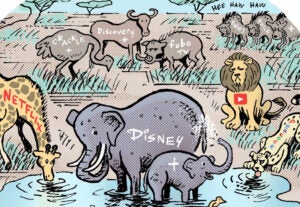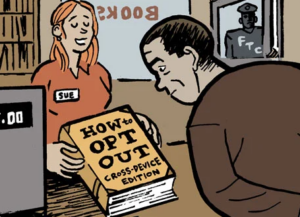 In a panel discussion at Tuesday’s AllFacebook Conference, platform providers offered their insights on Facebook’s Open Graph and what marketers should think about when it comes to their social media plans.
In a panel discussion at Tuesday’s AllFacebook Conference, platform providers offered their insights on Facebook’s Open Graph and what marketers should think about when it comes to their social media plans.
Facebook describes “Open Graph” on its developer site as helping “people tell stories about their lives with the apps they use. It provides developers with the opportunity to deeply integrate their app into the core Facebook experience, which enables distribution and growth.” Ultimately, Marketers want to figure out how to use the “gobs” of Open Graph data to target their messaging and campaigns.
And a key theme of the panel discussion was how rapidly Facebook’s platform evolves as, no doubt, the social giant’s throngs of engineers and product warriors are constantly spinning the dials looking for the next best thing whether it’s user experience, the Open Graph, making better ads or apps – or all of the above. How is a “partner” company to keep up? The panelists, which were from a range of startups as well as CRM agency Merkle, seemed to say that you can make a living in Facebook’s wake.
Paid media remains a linchpin for making the Facebook ads and marketing experience work as Brand Networks‘ Jamie Tedford noted the need for significant “amplification” (i.e. lots of paid media). Andrew Beranbom of Redpoint and Norwest-funded Extole said that an important part of the Open Graph for marketers is addressing the “friends” audience of a brand page which can be 10 to 15x in number of a brand page’s “like”-ers, if you will. For Beranbom, the opportunity is word-of-mouth at-scale. Jesse Pujji from Ampush said a typical Facebook scenario using Open Graph data would be if you are a Starbucks lover, you’ll be checking what your friend had last time, what you had last time and maybe what everyone in your neigborhood had for the last month. His point is that unlocking the sharing data economy is Facebook’s goal.
Nouns, Verbs and Action Specs
When you dig in on the terminology of Open Graph, action specs are a critical element. Facebook describes them as “actions people have taken on Open Graph objects via an application or an on-Facebook object directly.” A simple example is when a user “likes” an app.
In response to an audience member’s question about how one might promote an event within the Open Graph, Optim.al’s Leathern admitted that it often boils down to experimentation. The moderator Todd Tweedy of Audience Machine jumped in and suggested that when the audience members sit down with their bosses to discuss the justification of working with Open Graph that they should call it “database marketing” instead – presumably making it easier for traditional minds to grasp.
Merkle’s Megan Pagliuca said that Facebook’s move towards better measurement this year is good for marketers and pointed to Facebook’s re-adoption of the conversion pixel which allows for post-impression tracking.
Speaking to concerns around a user’s sharing data and privacy, Extole’s Beranbom stressed that it’s going to depend on the Facebook user – some may get nervous, but many won’t. He pointed to app install rates where a decrease could mean users are becoming more protective of their privacy due to the data given in exchange for an install. In fact, Beranbom saw rates climbing. Pujji said utility will change the privacy conversation as he thinks users need to know what the differences are – what does sharing enable? Optimal’s Leathern said that the bottom line for marketers is that they need to understand the trade off that happens on Facebook with sharing. Leathern added that Facebook’s T’s and C’s are more stringent than other he’s faced in his experience.
Merkle’s Pagliuca said that social media and direct response teams are the main contacts within marketers today for Open Graph marketing. She compared the shift in programmatic buying from brand to direct buying to what she sees happening with Open Graph – moving from brand to DR.
That’s interesting – could social media no longer be pitched as the brand awareness solution? Everything is going D.R., perhaps.
Pagliuca added that new demographic targeting on Facebook is potentially setting up a range of people that will want to use Open Graph data.
There was no mention of the Open Graph used in combination with the Facebook Exchange. Privacy concerns aside (and that’s a big aside), that combination is something that Facebook would likely love to uncork from a revenue perspective – the Facebook ad network of the future could use Facebook data to target users across the Web and beyond the Facebook login.
One of Leathern’s Facebook marketing tips to conference goers emphasized starting with your existing customers and making use of Facebook’s new “Custom Audiences” offering. The ad targeting product allows for email addresses (such as a an eCommerce client list) to get mapped against a Facebook login email which in turn is mapped to a cookie that enables targeting within Facebook.com. That’s where it all begins for brands says Leathern.
The Facebook “Want” button came up for review on the panel. Leathern compared it to the Amazon “wish” list as an example of a failed “Want” button that people rarely use. Beranbom said “want” can be understood through app installs to a degree, but admitted that it’s difficult for anyone to understand “want” among consumers. Leathern said scale was key to anything like “want” or “like”.. and right now, “like” is the winner.
Another question from the audience had Brand Networks’ Tedford saying that the algorithms pulsing with Open Graph data are always changing on Facebook. Ampush’s Pujji chimed in that adoption of aggressively using Open Graph isn’t quite there yet with his clients.
Finally, “Is there an Open Graph for dummies?” The best single source is Facebook’s own developer site according to the panel.
Panelists included:
- Andrew Beranbom, VP of Business Development & Co-Founder, Extole
- Rob Leathern, Co-Founder and CEO, Optimal
- Megan Pagliuca, VP and GM, Digital Media, Merkle
- Jesse Pujji, CEO and Co-Founder, Ampush
- Jamie Tedford, Founder and CEO, Brand Networks
- Todd Tweedy, Managing Director, Audience Machine (Moderator)













